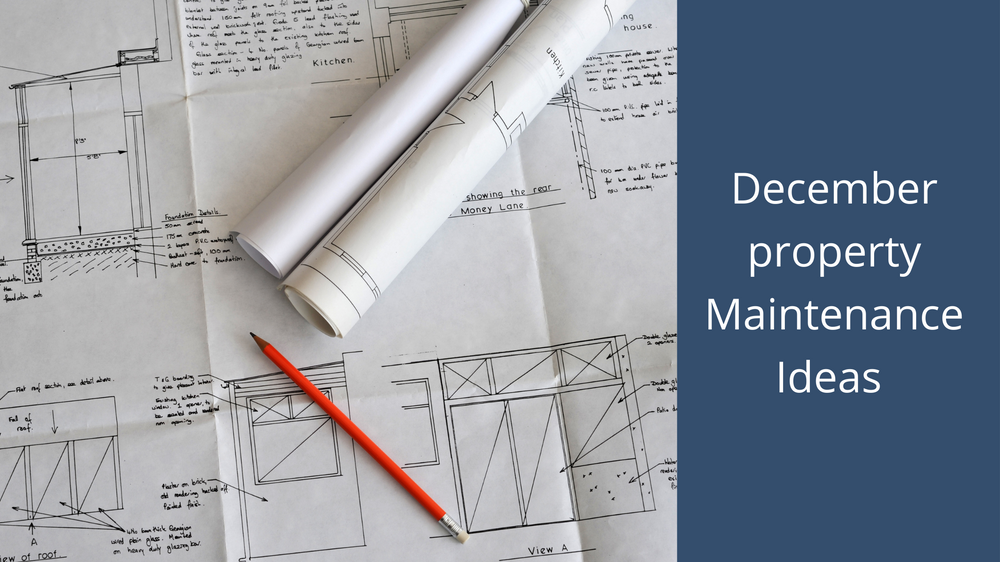December Property Maintenance and Ideas

As we head towards Christmas and the dark, cold, winter days, there are still some jobs that can be done, but it is also a great opportunity to consider future jobs that may be required. Here are some examples:
Insulation
Did you know that a quarter of heat is lost through the roof in an uninsulated home? Insulating your loft is an effective w
ay to reduce heat loss and reduce your heating bills.
Professionally installed loft insulation will typically take a couple of years to pay for itself through the savings you’ll make on your heating bills if you go from no insulation to the recommended amount. The minimum recommended thickness for loft insulation is 270mm but we recommend 350mm.
In the first instance, check whether you have any insulation at all in your loft and, if you do, how much. If you already have some loft insulation but less than the recommended 270mm, then you could save more on your energy bills by topping it up.
Decorating
Most people tend to redecorate in springtime, however, freshening up paintwork or wallpaper is a good indoor DIY job for winter to while away the long, dark evenings while leaving yourself with a brighter home.
Also, look at things like coving, skirting boards, dado and picture rails, and the beading around laminate flooring, which could become loose if the floorboards shrink slightly in colder weather.
Planning big changes
The holiday period is a great opportunity to really consider the goal of any plans you are considering for your home and what may be involved. Planning for work to take place in the warmer months is sensible, as the weather is better and delays are less likely, especially if building work is involved.
Here are some tips to help you:
- Sketch out your vision thinking about your requirements. Research what your neighbours have done to determine what would be a good return on investment and what works well. Having a detailed list of your desires, and what will make the most impact on your life at home as this makes it easier to decide how best to allocate your money.
- Consider your budget and include a contingency fund for any unplanned repairs or unexpected costs that may occur, including things like dining out more or staying in a hotel whilst work is being carried out. When you work with a reputable contractor, they should have a system for keeping costs, and any changes to expenses, in line with their estimates.
- Speaking of contractors, the very first tip should be to find a qualified one that can bring your dreams to life. Check out reviews and see what their past clients say about their work and service. Keep in mind that a great contractor may also offer some possibilities that you hadn't considered.
- Think about the timeline of your project and take into consideration any upcoming holidays and events you would like your home to be ready by. It is best to set your end date and plan backward, being realistic and planning for extra time, if possible, in the case of delays or additional repairs.
If you would like any specific advice about any work you are considering, we are always happy to help at Jigsaw. Just get in touch.




